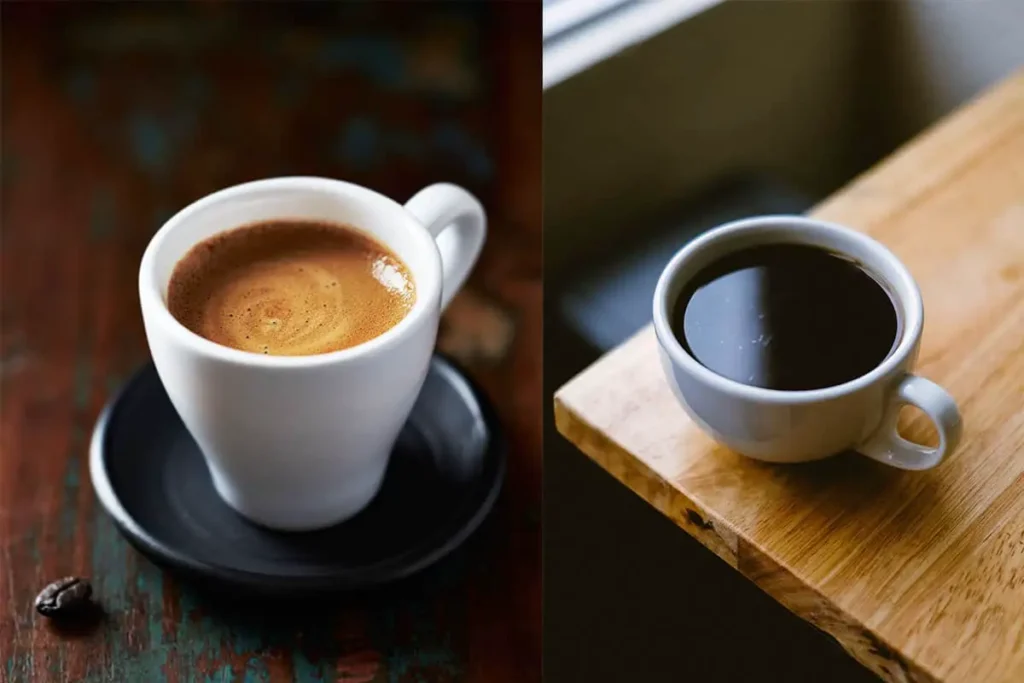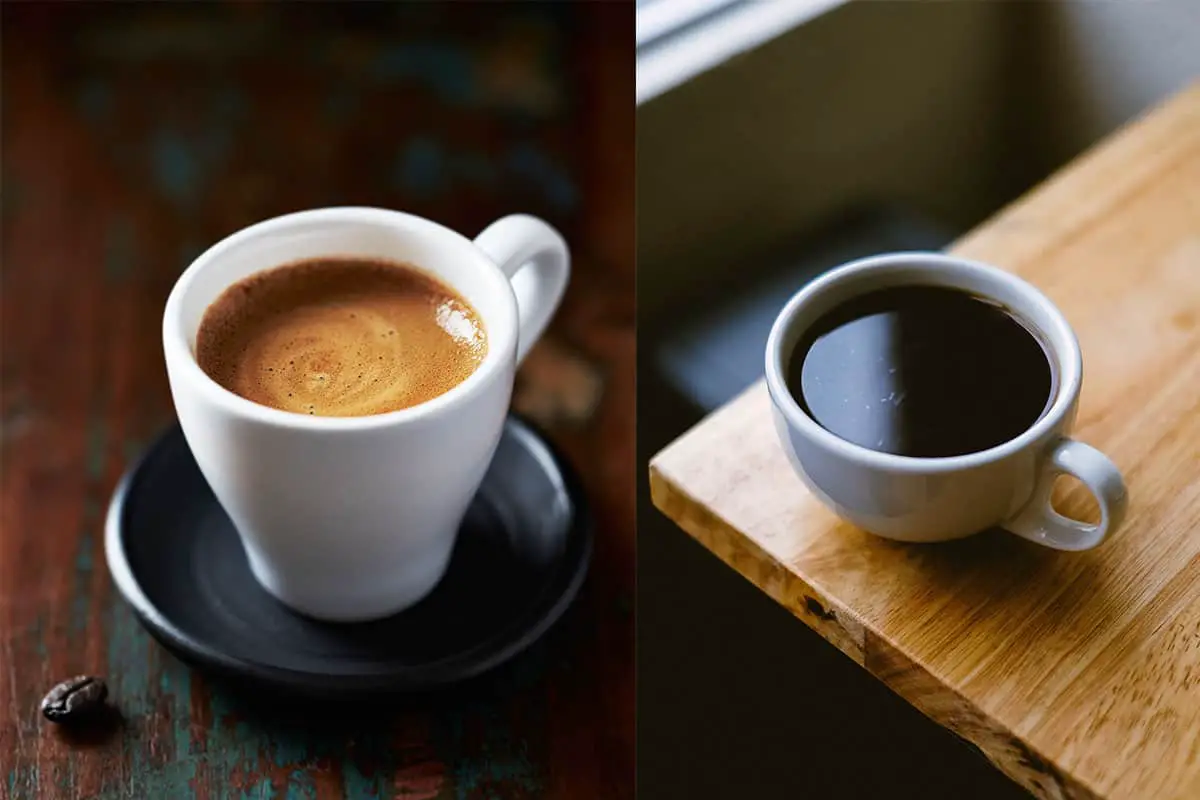
Espresso Coffee vs. Brewed Coffee: Decoding the Differences
In the ever-evolving world of coffee, two titans reign supreme: espresso coffee and brewed coffee. These seemingly simple beverages represent vastly different approaches to coffee preparation, each offering a unique sensory experience. For the casual coffee drinker, the nuances might seem subtle. However, for the coffee aficionado, the distinctions are critical. This article delves deep into the world of espresso coffee versus brewed coffee, exploring their preparation methods, flavor profiles, and overall experience. We’ll dissect the fundamental differences, empowering you to appreciate the artistry behind each cup and make informed choices based on your preferences.
The Art of Espresso: Pressure, Precision, and Intensity
Espresso coffee is more than just a coffee drink; it’s a concentrated extraction achieved through high pressure. The process begins with finely ground coffee beans, meticulously tamped into a portafilter. This compacted puck of coffee is then subjected to hot water, forced through under immense pressure – typically around nine bars (approximately 130 psi). This forceful extraction is what gives espresso coffee its signature characteristics: a rich, syrupy body, a complex flavor profile, and a thick, golden crema on top.
The key to a great espresso coffee lies in the precision of the process. Factors like grind size, tamping pressure, water temperature, and extraction time all play crucial roles. A slight adjustment in any of these variables can drastically alter the final result. This level of control is why skilled baristas are so highly regarded. They are masters of the espresso coffee machine, capable of coaxing the perfect shot from every bean.
Espresso coffee is often enjoyed as a standalone beverage, a small but powerful shot of caffeine and flavor. However, it also serves as the foundation for a wide array of coffee-based drinks, including lattes, cappuccinos, macchiatos, and Americanos. The versatility of espresso coffee has cemented its place as a cornerstone of modern coffee culture.
The Espresso Machine: A Technological Marvel
The espresso machine itself is a marvel of engineering. From the simple lever machines of the early 20th century to the sophisticated, electronically controlled machines of today, the technology has constantly evolved. Modern espresso machines offer precise control over every aspect of the brewing process, allowing baristas to consistently produce high-quality shots. The investment in an espresso coffee machine can range from a few hundred dollars for a home model to tens of thousands for a commercial-grade machine.
Brewed Coffee: Simplicity and Versatility
In contrast to the pressurized world of espresso coffee, brewed coffee embraces a more gentle approach. Brewing methods vary widely, but the core principle remains the same: hot water is poured over coffee grounds, allowing gravity to extract the flavor. This encompasses a broad spectrum, from the familiar drip coffee makers found in homes and offices to the more artisanal methods like pour-over and French press.
The versatility of brewed coffee is one of its greatest strengths. The brewing process is generally less demanding than espresso coffee, making it accessible to a wider audience. You can easily adjust the coffee-to-water ratio, the grind size, and the brewing time to customize the flavor to your liking. This adaptability makes brewed coffee an excellent choice for experimenting with different coffee beans and brewing techniques.
Common Brewed Coffee Methods
- Drip Coffee: The most common method, using a paper filter to separate the grounds from the brewed coffee.
- Pour-Over: A manual method where hot water is slowly poured over the grounds, allowing for greater control over the extraction.
- French Press: Coffee grounds are steeped in hot water, then pressed to the bottom using a mesh filter.
- Cold Brew: Coffee grounds are steeped in cold water for an extended period (12-24 hours), resulting in a smooth, low-acid concentrate.
Flavor Profiles: A Comparative Tasting
The flavor profiles of espresso coffee and brewed coffee are distinctly different, largely due to the extraction methods. Espresso coffee, extracted under pressure, tends to have a more concentrated and intense flavor. The high pressure also emulsifies the oils in the coffee beans, contributing to a richer body and a more pronounced crema. The flavor notes are often bolder, with hints of chocolate, caramel, and sometimes even fruity or floral undertones, depending on the bean and roasting profile.
Brewed coffee, on the other hand, typically offers a lighter, more nuanced flavor profile. The slower extraction process allows for a broader range of flavors to develop. Brewed coffee can range from light and bright with floral notes, to full-bodied and chocolatey, depending on the brewing method and the coffee bean used. The absence of pressure also leads to a less oily texture and a less pronounced crema.
Ultimately, the best choice depends on individual preferences. Those who enjoy a bold, concentrated flavor will likely prefer espresso coffee. Those who appreciate a more subtle and nuanced experience might favor brewed coffee. Some people even enjoy both, depending on the time of day or the desired mood.
Caffeine Content: A Matter of Concentration
While the caffeine content of a coffee drink can vary based on factors like the bean type, roast level, and brewing method, espresso coffee generally packs a more concentrated caffeine punch per serving. A single shot of espresso coffee (around 1 ounce) typically contains around 63 milligrams of caffeine, while a standard cup of brewed coffee (around 8 ounces) usually contains between 95 and 200 milligrams. This difference is primarily due to the concentration of the extraction process.
However, it’s important to note that the total caffeine intake often depends on the serving size. A latte, made with a double shot of espresso coffee, will obviously contain more caffeine than a single cup of brewed coffee. Therefore, the caffeine content should be considered alongside the serving size when making your choice.
The Brewing Process: A Detailed Comparison
The brewing processes for espresso coffee and brewed coffee differ significantly. Understanding these distinctions is key to appreciating the final product.
Espresso Brewing Process
- Grinding: Coffee beans are ground to a very fine consistency.
- Dosing and Tamping: The ground coffee is dosed into the portafilter and tamped with even pressure.
- Extraction: Hot water (around 195-205°F) is forced through the compacted coffee grounds under high pressure (around 9 bars) for approximately 25-30 seconds.
- Enjoyment: The resulting espresso coffee is served immediately, either as a shot or as the base for other drinks.
Brewed Coffee Brewing Process
- Grinding: Coffee beans are ground to a coarser consistency, depending on the brewing method.
- Preparation: Grounds are placed in a filter (paper, metal, or cloth) and the brewing device.
- Extraction: Hot water is poured over the grounds (pour-over), dripped through (drip coffee), or steeped with the grounds (French press).
- Filtration: Grounds are separated from the brewed coffee using a filter.
- Enjoyment: The brewed coffee is ready to be enjoyed.
Choosing the Right Coffee for You: A Personal Journey
The choice between espresso coffee and brewed coffee is ultimately a matter of personal preference. There is no objectively “better” option. The best coffee for you is the one you enjoy the most. Consider these factors when making your decision:
- Flavor Preference: Do you prefer a bold, intense flavor or a more subtle and nuanced experience?
- Desired Caffeine Level: Are you looking for a quick caffeine boost or a more moderate dose?
- Time and Effort: How much time and effort are you willing to invest in the brewing process?
- Equipment: Do you have the necessary equipment, or are you willing to invest in it?
Exploring different coffee beans, brewing methods, and drink preparations is a rewarding journey. Don’t be afraid to experiment and find what truly satisfies your palate. The world of espresso coffee and brewed coffee offers a vast and exciting landscape to explore.
Beyond the Basics: Exploring Coffee Culture
The differences between espresso coffee and brewed coffee extend beyond the technical aspects of brewing. They also reflect different facets of coffee culture. Espresso coffee is often associated with a more sophisticated and specialized experience, requiring skill and precision. It’s the domain of baristas, latte art, and the pursuit of the perfect shot. Brewed coffee, on the other hand, is often associated with a more relaxed and accessible approach. It’s the coffee you grab on your way to work, the coffee you enjoy at home, and the coffee that fuels everyday life.
Both styles contribute to the rich tapestry of coffee culture. The rise of specialty coffee shops has further blurred the lines, with many establishments offering both espresso coffee drinks and a variety of brewed coffee options. This allows coffee lovers to experience the best of both worlds and tailor their coffee experience to their individual preferences.
The Future of Coffee: Innovation and Evolution
The coffee industry is constantly evolving, with new brewing methods, coffee beans, and drink creations emerging all the time. The quest for the perfect cup of espresso coffee continues, with advancements in machine technology and barista training. Simultaneously, innovation in brewed coffee methods, such as the development of new pour-over techniques and cold brew variations, is expanding the possibilities of coffee flavor and experience. The future of coffee promises even more exciting developments for both espresso coffee and brewed coffee enthusiasts. The constant evolution ensures that the debate between espresso coffee and brewed coffee will continue to be a lively and engaging discussion within the coffee community.
Whether you prefer the intense rush of an espresso coffee shot or the comforting familiarity of a well-brewed cup, the world of coffee offers something for everyone. The key is to explore, experiment, and discover what truly delights your senses. The journey of coffee appreciation is a lifelong adventure, filled with new discoveries and endless possibilities.
[See also: Best Coffee Beans for Espresso; Best Coffee Makers for Brewed Coffee; How to Clean Your Espresso Machine]


